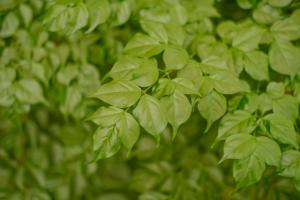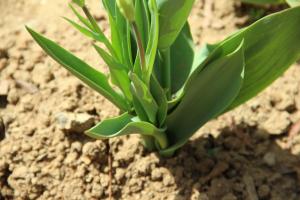Can You Plant Tomatoes in the Rain?
Plant enthusiasts and gardeners often face the dilemma of whether it is okay to plant tomatoes in the rain. Nature lovers who are eager to plant their vegetables, such as tomatoes, would wonder if it’s healthy or dangerous to plant these in the rain. In this article, we’ll discuss the benefits and disadvantages of planting tomatoes in the rain.
The Pros of Planting Tomatoes in the Rain
Planting tomatoes in the rain has a few benefits that are worth considering. During unexpected rainy days, gardeners can take the opportunity to plant their tomato seedlings. The moist soil conditions and humidity increases the growth rate of the plant when they are first transplanted into the ground, which can lead to stronger growth in the soil throughout the season.
Furthermore, rainy weather often coincides with cooler temperatures. This can be beneficial for starting tomato plants in hot climates since it provides an opportunity to establish the roots before the onset of heat. There are also some tomatoes, such as cherry tomatoes, that thrive in cooler temperatures.
The Cons of Planting Tomatoes in the Rain
Planting vegetables in the rain has a few negative effects that could be potentially harmful to tomato plants. One of the significant problems that occur due to planting in heavy rain is soil erosion. The heavy downpours can cause the soil to wash away from the root zone, leaving the plants exposed and potentially killing the seedlings. Plants that are already established may also experience problems due to overwatering.
Another disadvantage of planting tomatoes in the rain is the increased risk of fungal diseases. Rain is an environmental factor that can trigger the growth and spread of various fungi that would cause tomato plants to wilt or die. If the rain persists for more than a few days, tomato plants may suffer from root rot or blight.
Tips for Planting Tomatoes in the Rain
Despite the drawbacks of planting in the rain, gardeners can still take precautions to ensure successful tomato cultivation. Here are some tips to remember when planting tomatoes during rainy weather conditions:
Choose seedlings that have stronger stems and leaves to reduce the risk of damage caused by strong winds and heavy rain;
Prepare the soil before planting; loosen the earth and add compost to promote moisture retention;
Identify any adverse weather predictions and adjust planting time accordingly;
Avoid planting during the monsoon season or when the forecast indicates several consecutive days of heavy rain;
Cover young seedlings with plastic bags or sheets of plastic to avoid exposure to excessive rain.
Conclusion
In conclusion, tomatoes can be planted in the rain as long as you follow the recommended precautions. While the rain provides a vital source of hydration and nutrients for plants, too much of it can cause soil erosion, fungal diseases, and root rot. Therefore, it'd be best to take the necessary steps to protect your plants from environmental factors that can impact their growth and survival. Happy growing!

 how many times do yo...
how many times do yo... how many planted tre...
how many planted tre... how many pine trees ...
how many pine trees ... how many pecan trees...
how many pecan trees... how many plants comp...
how many plants comp... how many plants can ...
how many plants can ... how many plants and ...
how many plants and ... how many pepper plan...
how many pepper plan...
































